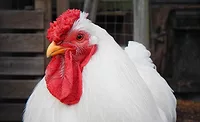Denmark’s Plan to Tackle Campylobacter in Chicken

The Danish Veterinary and Food Administration (DFVA) has released a new action plan to help farmers and food companies reduce Campylobacter in chicken. The action plan for 2022–2026 is part of the administration’s continued effort to reduce the number of people infected by Campylobacter nationwide. DFVA collaborated with the food industry and the Technical University of Denmark to develop the plan.
DFVA reports that, since 2013, the risk of contracting Campylobacter from Danish chicken meat has nearly halved. Despite this reduction, approximately 4,000 people in Denmark still become ill from the foodborne pathogen yearly. DFVA also notes that recent sampling has found Campylobacter in imported chicken meat more often than in domestic chicken meat.
The action plan focuses on chicken because chicken meat is Denmark’s greatest source of Campylobacter infection. However, the plan also identifies the need to determine sources of infection other than chicken in its strategy. The plan highlights Campylobacter control in broiler production and improved outbreak detection as other key areas of focus. In the next four years, the strategy aims to accomplish:
- Publication of a model and results from monitoring retail chicken meat in Denmark
- Increased use of whole genome sequencing, more rapid source tracing with better typing methods, and improved data sharing
- Refined efforts to monitor Campylobacter in broilers
- Implementation of preventive measures to reduce infection in flocks (i.e., feed additives, production changes, sanitization, refrigeration).
Looking for quick answers on food safety topics?
Try Ask FSM, our new smart AI search tool.
Ask FSM →







